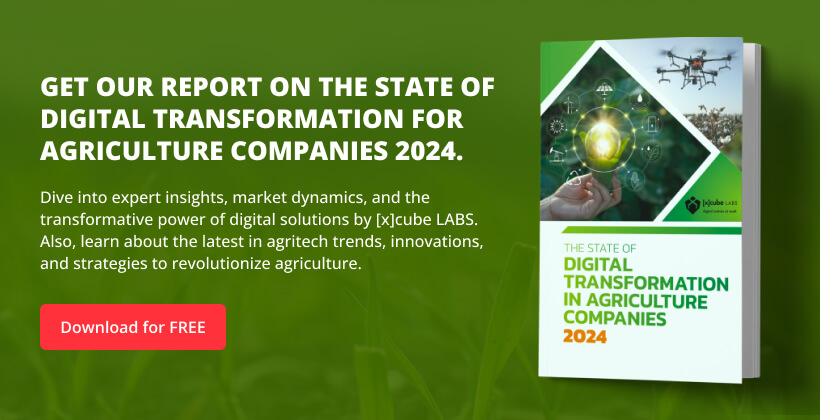Hybrid and Multi-Cloud AI Deployments

As organizations plan to adopt AI rapidly, sending computerized reasoning (artificial intelligence), frameworks have become a foundation for development across different ventures.
Associations progressively embrace mixture and multi-cloud systems to amplify AI deployment capabilities. These reasoning methods offer adaptability and versatility, connecting with relationships to use the qualities of different cloud conditions while coordinating expected limits.

Understanding AI Deployment
Re-enacted insight sending implies integrating reproduced knowledge models into utilitarian circumstances, where they can convey critical information and promote free-flowing.
This includes creating artificial intelligence calculations and the foundation and stages that support their execution. A powerful simulated intelligence arrangement guarantees that models are available, productive, and equipped to handle genuine information inputs.
Defining Hybrid and Multi-Cloud AI Deployment
A hybrid AI deployment integrates on-premises infrastructure with public or private cloud services, allowing data and applications to move seamlessly between these environments. This model benefits associations that require information power, low-dormancy handling, or have existing interests in on-premises equipment. For example, an organization could handle delicate information on-premises to consent to administrative necessities while using the cloud for less delicate responsibilities.
In contrast, a multi-cloud AI deployment involves utilizing multiple cloud service providers to distribute AI workloads. This strategy prevents vendor lock-in, optimizes performance by selecting the best services from different providers, and enhances disaster recovery capabilities. For example, an organization might use one cloud provider for data storage because it is cost-effective and another for AI processing because of its superior computational capabilities.

Benefits of Hybrid and Multi-Cloud AI Deployments
- Flexibility and Adaptability: By combining on-premises resources with various cloud organizations, affiliations can scale their AI deployment obligations, accommodating fluctuating solicitations without overprovisioning. This flexibility ensures associations react quickly to changing financial circumstances and mechanical movements.
- Cost Enhancement: A multi-cloud approach permits organizations to choose practical administrations from various suppliers, streamlining spending and avoiding the high costs that might accompany a solitary supplier system. Associations can manage their financial plans by selecting the most prudent options for specific tasks while optimizing AI deployment across different cloud environments.
- Risk Moderation: Disseminating AI deployment jobs across different conditions decreases the gamble of margin time and information misfortune, improving business coherence and flexibility. In a help disturbance with one supplier, jobs can be moved to another, guaranteeing continuous tasks.
- Regulatory Compliance: Hybrid deployments enable organizations to keep sensitive data on-premises to comply with data sovereignty laws while leveraging the cloud for less sensitive workloads. This approach ensures adherence to regional regulations and industry data privacy and security standards while optimizing AI deployment for efficiency and scalability.
Challenges in Implementing Hybrid and Multi-Cloud AI Deployments
While the advantages are significant, implementing these strategies comes with challenges:
- Diverse nature: Controlling and determining positions in various circumstances requires vigorous equipment and a proficient workforce. Planning multiple stages requires a wide range of energy for each development’s intricacies.
- Interoperability: Ensuring a trustworthy blend among stages and affiliations requires cautious readiness and standardized shows. Without proper interoperability, data storerooms can emerge, upsetting the capability of PC-based information attempts.
- Security: Protecting data across multiple environments demands comprehensive security measures and vigilant monitoring. The distributed nature of hybrid and multi-cloud deployments can introduce vulnerabilities if not properly managed.

Best Practices for Effective AI Deployment in Hybrid and Multi-Cloud Environments
- Adopt a Unified Management Platform: To streamline operations, utilize centralized resource management platforms across on-premises and cloud environments. This approach simplifies AI deployment, monitoring, provisioning, and maintenance tasks.
- Execute Powerful Security Conventions: Implement complete encryption, standard security reviews, and consistency checks to protect information trustworthiness and security. Establishing a zero-trust security model can improve protection against expected dangers, especially in AI deployment environments.
- Influence Containerization and Coordination: Use containerization advances like Docker and arrangement instruments like Kubernetes to guarantee steady sending and adaptability across conditions. Compartments typify applications and their conditions, advancing transportability and practical asset usage.
- Screen Execution Ceaselessly: Lay out exhaustive checking to follow execution measurements, empowering proactive administration and improvement of simulated intelligence responsibilities. Using progressed investigation can assist with recognizing bottlenecks and working with opportune intercessions.
Case Studies: Successful Hybrid and Multi-Cloud AI Deployments
Carrying out half-and-half and multi-cloud AI deployment arrangements has enabled a few associations to upgrade tasks, improve security, and conform to administrative principles—Point-by-point contextual analyses from the monetary administrations, medical services, and retail areas.
1. Financial Services: Province Bank of Australia (CBA)The Ward Bank of Australia (CBA) has decisively embraced a half-breed computer-based intelligence sending to upgrade its financial administrations. By incorporating on-premises frameworks with cloud-based artificial intelligence arrangements, CBA processes exchanges locally to meet low-idleness prerequisites and uses cloud administrations for cutting-edge investigation, like extortion identification.
- CBA joined Amazon Web Administrations (AWS) in a new drive to send off CommBiz Gen artificial intelligence, an artificial intelligence-controlled specialist intended to help business clients with questions and give ChatGPT-style reactions.
This apparatus intends to offer customized financial experiences with faster installments and more secure exchanges. Coordinating on-premises handling guarantees quick exchange management, while cloud-based artificial intelligence investigation upgrades safety efforts by distinguishing fake transactions.
2. Healthcare: Philips, a global leader in health technology, has implemented a multi-cloud AI deployment to manage patient data efficiently while adhering to stringent health data regulations. By storing delicate patient data in confidential files, Philips guarantees consistency with information power regulations. At the same time, the organization processes anonymized information publicly to foster predictive well-being models, progressing customized care.
- Under President Roy Jakobs’s administration, Philips uses artificial intelligence to improve clinical diagnostics and patient care. The organization’s methodology includes responding to buyer requests for health-related innovations while expanding consideration of home medical services arrangements.
Philips advocates for a capable approach to using artificial intelligence in medical care, collaborating with tech pioneers and guaranteeing thorough testing and approval.
3. Retail: CarMax, the biggest pre-owned vehicle retailer in the US, has used a crossover simulated intelligence organization to customize client encounters. CarMax maintains security and adheres to information assurance guidelines by dissecting client information on-premises. Simultaneously, the organization utilizes cloud-based artificial intelligence administrations to create item proposals, improving client commitment and driving deals.
- In a recent project, CarMax used Azure OpenAI Service to generate customer review summaries for 5,000 car pages in a few months. This approach improved the customer experience by providing concise and relevant information and demonstrated the scalability and efficiency of hybrid AI deployments in handling large datasets.
These contextual investigations show how associations across different areas execute crossover and multi-cloud computer-based intelligence arrangements to meet explicit functional necessities, upgrade security, and conform to administrative prerequisites.

Future Trends in AI Deployment
The landscape of AI deployment is continually evolving, with emerging trends shaping the future:
- Edge AI: Handling artificial intelligence responsibilities nearer to information sources diminishes idleness and data transmission utilization. Coordinating AI deployment with edge registration, half-and-half, and multi-cloud systems can upgrade constant information handling capacities.
- Serverless Registering: Using serverless models licenses relationship to run counterfeit figuring out applications without managing the secretive establishment, pushing adaptability and cost-viability.
- AI Model Interoperability: It will become increasingly important to develop AI models that operate seamlessly across different platforms, reducing dependency.
Conclusion
As counterfeit thinking progresses, relationships across associations look for creative ways to convey and scale their reproduced information models. Flavor and multi-cloud AI deployment methods have emerged as liberal game plans, permitting connections to use the advantages of different cloud conditions while observing unequivocal, down-to-earth difficulties.
By embracing these methodologies, organizations can unlock artificial intelligence’s maximum potential and enhance adaptability, versatility, and flexibility. However, implementing a half-cloud or multi-cloud AI deployment arrangement requires cautiously adjusting methodology, foundation, and safety efforts. By understanding and defeating the related difficulties, associations can establish a strong simulated intelligence foundation that drives development and maintains an advantage.
FAQs
What is a hybrid and multi-cloud AI deployment?
A hybrid AI deployment uses both on-premises infrastructure and cloud services, while a multi-cloud deployment distributes AI workloads across multiple cloud providers to enhance flexibility, performance, and reliability.
What are the benefits of hybrid and multi-cloud AI deployments?
These deployments provide scalability, redundancy, cost optimization, vendor flexibility, and improved resilience, ensuring AI models run efficiently across different environments.
What challenges come with hybrid and multi-cloud AI setups?
Common challenges include data security, integration complexity, latency issues, and managing cross-cloud consistency. Containerization, orchestration tools, and unified monitoring solutions can help mitigate these issues.
How do I ensure seamless AI model deployment across multiple clouds?
Best practices include using Kubernetes for containerized deployments, leveraging cloud-agnostic AI frameworks, implementing robust APIs, and optimizing data transfer strategies to minimize latency and costs.
How can [x]cube LABS Help?
[x]cube has been AI native from the beginning, and we’ve been working with various versions of AI tech for over a decade. For example, we’ve been working with Bert and GPT’s developer interface even before the public release of ChatGPT.
One of our initiatives has significantly improved the OCR scan rate for a complex extraction project. We’ve also been using Gen AI for projects ranging from object recognition to prediction improvement and chat-based interfaces.
Generative AI Services from [x]cube LABS:
- Neural Search: Revolutionize your search experience with AI-powered neural search models. These models use deep neural networks and transformers to understand and anticipate user queries, providing precise, context-aware results. Say goodbye to irrelevant results and hello to efficient, intuitive searching.
- Fine-Tuned Domain LLMs: Tailor language models to your specific industry for high-quality text generation, from product descriptions to marketing copy and technical documentation. Our models are also fine-tuned for NLP tasks like sentiment analysis, entity recognition, and language understanding.
- Creative Design: Generate unique logos, graphics, and visual designs with our generative AI services based on specific inputs and preferences.
- Data Augmentation: Enhance your machine learning training data with synthetic samples that closely mirror accurate data, improving model performance and generalization.
- Natural Language Processing (NLP) Services: Handle sentiment analysis, language translation, text summarization, and question-answering systems with our AI-powered NLP services.
- Tutor Frameworks: Launch personalized courses with our plug-and-play Tutor Frameworks. These frameworks track progress and tailor educational content to each learner’s journey, making them perfect for organizational learning and development initiatives.
Interested in transforming your business with generative AI? Talk to our experts over a FREE consultation today!
![Blog-[x]cube LABS](https://d6fiz9tmzg8gn.cloudfront.net/wp-content/uploads/2016/06/blog_banner.jpg)






